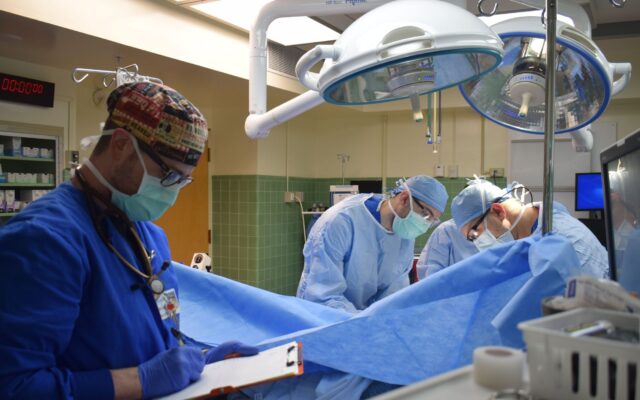
New federal funds could address health care shortage for generations
By David Marino Jr., Bangor Daily News Staff
Millions of dollars from a newly passed Congressional budget bill will play a crucial part in moving Maine’s only medical school to Portland, potentially growing the state’s health care workforce for years to come.
The University of New England’s planned medical school facility in Portland is one of over 120 Maine projects that made the final cut for federal funding in a bill President Joe Biden signed into law Tuesday. The university will use the $5 million to help move its medical school from Biddeford to Portland, a $93 million project it expects to complete by the summer of 2024.
That move will allow the university’s medical school, the College of Osteopathic Medicine, to increase its class size by around 38 students a year, UNE President James Herbert said, a rise that could strengthen the state’s health infrastructure for decades. It will also bring together different disciplines of health sciences onto a single campus, fostering the university’s efforts to better train students for collaborative health care work.
State officials and health care leaders in Maine have long warned that the state’s shortage of health care workers creates an untenable situation, especially for an aging population in a rural state.
That shortage of healthcare professionals was especially prevalent during the recent COVID-19 omicron wave, when Maine’s largest hospitals systems like MaineHealth, Northern Light Health and Central Maine Healthcare were pushed to the brink by a surge in hospitalizations largely due to staffing concerns. Gov. Janet Mills ended up calling in the Maine National Guard to assist in treatment efforts at multiple facilities.
Herbert testified about health care shortages in Maine to Congress last May at the invitation of Sen. Bernie Sanders and Sen. Susan Collins. Collins later requested the university funding in the budgetary process after being in contact with UNE for over a year about the project.
With the median age of Mainers being 45, the state has the highest median age in the country. That’s a quality, Collins noted in a statement, that makes it especially difficult for the state’s health care workforce to keep up with an aging population.
Collins said she had pushed for the funding due to that and because of the number of rural sections of the state that don’t have access to primary care facilities.
“The pandemic has further highlighted how vital it is to have a sufficient number of medical professionals to keep Mainers healthy,” Collins said. “I strongly advocated for this funding … to help address the shortage of medical professionals in Maine.”
The university’s health science offerings, including training to be a dentist, nurse, pharmacist and physician’s assistant, are almost entirely on the Portland campus rather than with the medical school in Biddeford. The medical school’s move to Portland will bring the Doctorate of Osteopathic Medicine degree to the same campus.
Consolidating the program onto one campus is a concentration of diverse health fields that Herbert said is “unprecedented” for a single campus in New England.
The new facility will also house the university’s Center for Excellence in Collaborative Education, which pushes health science students to collaborate with others in separate fields. Past examples have included pairing pharmacists up with primary care physicians as well as dentists with doctors and nurses so that they can enhance their understanding of each other’s fields.
The university has also had a physician’s assistant work at a clinic in Monson in rural Piscataquis County, using telehealth technology to connect them with medical professionals culled from the school’s partnership with the state’s largest hospitals.
“We’re not going to be able to place a neurosurgeon in every little village in northern Maine,” Herbert said. “But what we need to do is to have more people practicing using the tools of telehealth.”
Such collaborations had been instrumental in providing UNE students employment opportunities after graduation, including in some of the state’s most rural areas, he said.
The move to the new campus will increase that, he said, by simplifying the process to one campus and increasing collaborative efforts between health science programs. Portland is also closer to Biddeford to the state’s rural sections, he said.
The ultimate goal: to keep the students in Maine so they can treat other Mainers for years to come.
“We can’t erect a gate on I-95 at the bridge and not let them out of the state,” Herbert said. “But we can incentivize them and do various things to increase the likelihood that they will stay in Maine.”